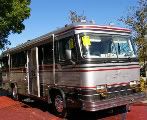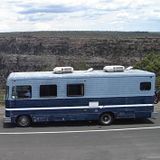Go to...  | Start A New Topic  | Search  | Notify  | Tools  | Reply To This Topic  |  |
 1/11 1/11 |
I WAS IN A TRUCK STORE AND I HEARD A MAN ASK FOR COOLANT.THE ATTENDANT SAID FOR GAS OR DIESEL. DO THEY HAVE DIFFERENT COOLANT?NOW HOW DO YOU CHANGE COOLANT IN A CUMMINS 8.3 SIDE RADIATOR?I CANT FIND THE DRAIN PLUG. LENNY lenny and judy 32', Regency, Cummins 8.3L, Spartan Chassis, 1992 Tag# 9112 0158 32RS 1B | ||
|
Captain Doom |
Some diesel manufacturers require additives in the coolant not required by manufacturers of gaso engines. Cummins is one of these, and it would be a good idea to check the manual and/or Cummins' website for approved anti-freeze. Rusty '94 28' Breakaway: MilSpec AMG 6.5L TD 230HP Nelson and Chester, not-spoiled Golden Retrievers Sometimes I think we're alone in the universe, and sometimes I think we're not. In either case the idea is quite staggering. - Arthur C. Clarke It was a woman who drove me to drink, and I've been searching thirty years to find her and thank her - W. C. Fields | |||
|
 |
What I'd read at one time is this: some early models of some diesel engines (the 6.9L IH comes to mind) is that to reduce weight, the cylinder walls were designed thinner. The cylinder walls sit during operation in a bath of the coolant. The walls were made too thin, and thue during the power stroke of the piston, the cylinder walls would react to the cylinder pressure by stretching ever so minutely. This stretching and relaxation of the pressure on each engine cycle would induce microscopic stress fractures in the exterior wall of the cylinder. As enough of these occured, the metal would flake off, and eventually the engine would fail catastrophically. I think there might have been some coolants designed with additives to anneal the stress fractures, or somehow slow down the engine destruction process. Matt 1987 Barth 27' P32 Chassis Former State Police Command Post Chevrolet 454 Weiand Manifold, Crane Cam, Gibson Exhaust | |||
|
"Host" of Barthmobile.com 1/19 1/19 |
Pitting of cylinder walls is usually the result of airpockets exploding on contact with the hot surfaces of a cylinder wall exploding and leaving a pit mark - enough of these pit marks and you'll have a hole in the cylinder wall. This is called "Cavitation Erosion" and is more common if you try to run straight water. Here is an excellent antifreeze that was the leader in this type of protection. http://www.peakantifreeze.com/fleetcharge.htm
| |||||||||||||||
| ||||||||||||||||
 1/11 1/11 |
thanks I will check before I flush and change lenny lenny and judy 32', Regency, Cummins 8.3L, Spartan Chassis, 1992 Tag# 9112 0158 32RS 1B | |||
|
Lenny, Hopefully you haven't decided on your antifreeze yet and changed it out. Sounds like you are not aware of the problems with keeping up with Supplemental Coolant Additives (SCA) that the 6CTA requires. If you would like to not have to bother with the processing of monitoring the SCAs, consider flushing out your entire coolant system and switching to an OAT coolant. I have the same engine and switched to Final Charge Global 50/50 premix. It is available through NAPA, Flying J, Carquest, Pilot truck stops, Pep Boys and others. Check it out at http://www.finalcharge.com/ If you use a SCA-based coolant in your engine, you absolutely MUST check the SCA levels every six months with little strips that you use for the test. These strips are color-interpreted (if you are color blind in any way, it won't work). These strips are easily obtained, but only in quantity. The catch with this is that they expire and purchasing more than 2 or 3 is a waste. Figuring out how much SCA to add is sometimes tricky - and is based on the color intrepretation of that test strip. You also need to get the correct SCA brand for the coolant you choose. Switch to the OAT and not bother with this stuff. Mike 1995 Country Coach Magna, Cummins C8.3-300, Banks Stinger, Gillig Chassis, PowerTech gen w/Kubota 3-cyl, 2005 Wrangler pusher, "Diesels gather momentum not accelerate" | ||||
|
| Powered by Social Strata |
| Please Wait. Your request is being processed... |
|
This website is dedicated to the Barth Custom Coach, their owners and those who admire this American made, quality crafted, motor coach.
We are committed to the history, preservation and restoration of the Barth Custom Coach.
We are committed to the history, preservation and restoration of the Barth Custom Coach.



